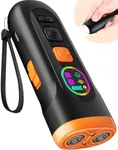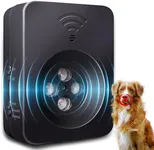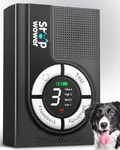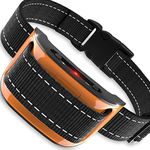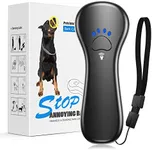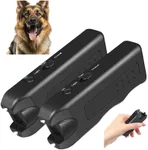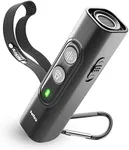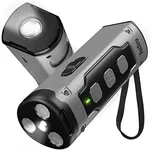Buying Guide for the Best Dog Barking Deterrents
Choosing the right dog-barking deterrent can be a game-changer for maintaining peace and quiet in your home or neighborhood. The key is to understand the different types of deterrents available and how their features align with your specific needs and your dog's behavior. Here are some important specifications to consider when selecting a dog-barking deterrent.Type of DeterrentDog-barking deterrents come in various types, including ultrasonic devices, vibration collars, spray collars, and static correction collars. Ultrasonic devices emit a high-pitched sound that only dogs can hear, which can be effective for some dogs but not all. Vibration collars use gentle vibrations to interrupt barking, which can be a good option for sensitive dogs. Spray collars release a burst of citronella or another harmless substance to deter barking. Static correction collars deliver a mild electric shock, which can be effective but should be used with caution. Choose a type based on your dog's temperament and your comfort level with the method.
RangeThe range of a dog-barking deterrent refers to the distance over which it can effectively detect and respond to barking. This is particularly important for ultrasonic devices and some collars. Short-range devices (up to 15 feet) are suitable for indoor use or small yards, while long-range devices (up to 50 feet or more) are better for larger outdoor areas. Consider where you will be using the deterrent and choose a range that covers the necessary area.
Sensitivity LevelsSensitivity levels determine how easily the device is triggered by barking. Some devices allow you to adjust the sensitivity to ensure it only activates when your dog barks, rather than responding to other noises. High sensitivity is useful for quieter dogs, while lower sensitivity is better for louder environments. Adjustability is key to finding the right balance for your specific situation.
Power SourceDog-barking deterrents can be powered by batteries, rechargeable batteries, or plugged into an electrical outlet. Battery-operated devices offer portability and are great for outdoor use, but you'll need to replace batteries regularly. Rechargeable devices are more convenient and cost-effective in the long run. Plug-in devices are ideal for indoor use where a power outlet is readily available. Consider where and how often you will use the deterrent to decide on the best power source for your needs.
DurabilityDurability is an important factor, especially if you plan to use the deterrent outdoors. Look for devices that are weather-resistant and made from sturdy materials to withstand the elements. For collars, ensure they are made from durable, comfortable materials that won't irritate your dog's skin. A durable product will last longer and provide consistent performance.
Ease of UseEase of use includes how simple it is to set up and operate the deterrent. Some devices come with remote controls or smartphone apps for easy adjustments, while others have straightforward manual controls. Consider your comfort with technology and how much time you want to spend managing the device. A user-friendly deterrent will make the process smoother and more effective.
